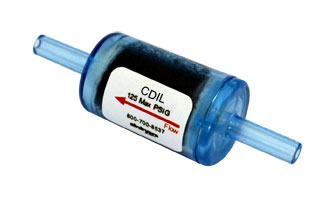Introduction
Contents
Activated carbon line filters are used to filter out impurities from water, air, and other liquids. By removing unwanted particles from the liquid, carbon line filters can help protect the environment and ensure that the water we consume is clean and safe. This article will discuss the types of carbon line filters, how they work, and the advantages and disadvantages of using them.
Types of Carbon Line Filters
Carbon line filters come in a variety of sizes and shapes, but the most common type is a granular activated carbon (GAC) filter. GAC filters contain tiny pores that attract and trap impurities from the liquid. These filters are effective in removing chlorine, organic contaminants, and other unwanted particles from water. Other types of carbon line filters include block carbon filters, which are made of a solid block of carbon and are used to remove lead and other heavy metals; and powdered activated carbon (PAC) filters, which are used to remove color and odor from water.
How Carbon Line Filters Work
Carbon line filters use a process called adsorption to remove particles from a liquid. This process uses the attraction between the surface of the filter and the particles present in the liquid. As the liquid passes through the filter, the particles are attracted to the surface of the filter and become trapped. This process is effective because the particles are unable to pass through the filter due to the attraction.
Advantages of Carbon Line Filters
One of the main advantages of using carbon line filters is their ability to remove a wide range of contaminants from water. These filters can remove chlorine, heavy metals, organic contaminants, and other particles from water. In addition, carbon line filters are relatively inexpensive and easy to install. They are also low maintenance and can last for many years without needing to be replaced.
Disadvantages of Carbon Line Filters
The main disadvantage of using carbon line filters is that they are not effective at removing some types of contaminants. These filters are not effective at removing dissolved salts, nitrates, and other dissolved solids. In addition, carbon line filters can become clogged over time and will need to be replaced more often. Finally, these filters are not effective at removing some volatile organic compounds, such as benzene and toluene.
Conclusion
Carbon line filters are a popular and effective way to remove contaminants from water and other liquids. These filters are relatively inexpensive, easy to install, and low maintenance. However, they are not effective at removing all types of contaminants, such as dissolved solids and volatile organic compounds. Therefore, it is important to consult a professional before installing a carbon line filter to ensure it is the right choice for your needs.

